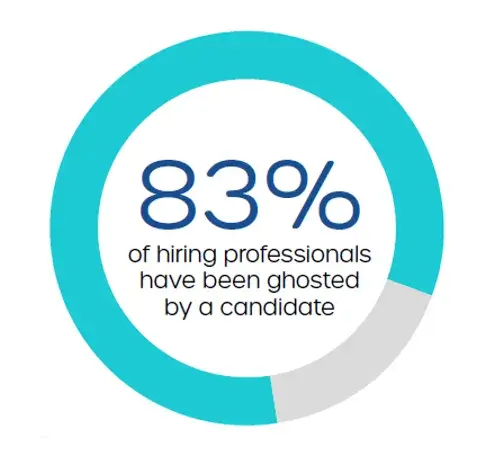In today’s candidate-driven market, employers are having to work harder to win over great candidates. One outcome of this is that more and more employers are experiencing “ghosting” for the first time.
Ghosting refers to any time a person stops communicating or responding without explanation. Examples of ghosting in the hiring sphere can include anything from a candidate not showing up for an interview, a candidate not responding to emails, or even a new employee failing to show up for the first day of work.
Earlier this year, we put out a survey to hiring professionals in order to learn more about today’s trends in the way that companies are hiring. We compiled the results of that survey in the 2019 Pre-Employment Testing Benchmark Report. One thing we were curious about was how common ghosting really is in today’s modern hiring landscape, so we put it to our survey group. What we found was that a whopping 83% of hiring professionals admitted to being ghosted at least once by a candidate.

Ghosting isn’t just a fringe problem anymore. The vast majority of employers are experiencing this issue, and sometimes it feels like it happens at random. Nevertheless, there are things you can do to reduce the likelihood that a candidate will ghost, and a lot of it is common sense. For example, treating candidates with respect (and not ghosting on candidates) can go a long way in reducing ghosting. After all, candidates have been ghosted by hiring managers for years, and now the tables have turned. Ultimately the hiring process is a two-way street; both candidates and employers want to feel like their time is being respected, and improving the candidate experience is one of the first places to start.
Check out this blog post for more tips on ways to reduce ghosting in your hiring process.





